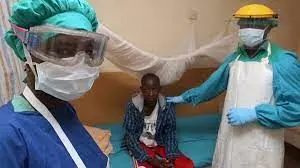- Home
- /
- Trending-News
- /
- Sharp increase in...
Sharp increase in Lassa Fever reported in week 51 of 2023 – NCDC

The Nigerian Centre for Disease Control (NCDC) has reported a sharp increase in Lassa fever cases in week 51 of 2023.
The centre, however, reported a lower fatality rate compared to the same period the previous year.
The information was released on the NCDC’s official website on Sunday in Abuja.
The centre said that in week 51 of 2023, the number of newly confirmed lassa fever cases increased significantly from 10 in week 50 to 26 cases.
“These cases were reported in Bauchi, Ondo, Taraba, and Plateau States,” it said.
“Cummulatively, from week 1 to week 51 of 2023, a total of 215 deaths have been reported, resulting in a case fatality rate of 17.5 percent.
“This figure is slightly lower than the record for the same period in 2022, which was 17.9 percent.
“Throughout the year 2023, Lassa fever cases were reported in 28 states across 121 local government areas.
“The majority of confirmed cases, accounting for 77 percent, were reported in Ondo, Edo, and Bauchi States.
“Specifically, Ondo State reported 35 percent of the confirmed cases, Edo reported 28 percent, and Bauchi reported 14 percent,” it stated.
The agency said that the age group most affected by Lassa fever was 21–30 years old, with cases ranging from 1 to 93 years old.
“It said that the median age of confirmed cases was 32 years.
The male-to-female ratio for confirmed cases is 1 and 0.9,” it stated.
The centre said that the number of suspected cases has increased compared to the same period in 2022.
It said that additionally, two healthcare workers were affected in week 51.
To address the situation, multi-sectoral Public Health Emergency Operation Centres (PHEOC) have been activated at the national level and in the affected states, it said.
It said that challenges faced in combating Lassa fever included the late presentation of cases, leading to an increase in the case fatality rate.
“Poor health-seeking behaviour is also observed due to the high cost of treatment and clinical management of the disease.
“Poor environmental sanitation conditions and low awareness are also observed in high-burden communities,” it stated.
It said that the report was based on case-based data retrieved from the National Lassa fever Emergency Operations Centre.
The statement identified symptoms of the disease as including fever, headache, sore throat, cough, nausea, vomiting, diarrhoea, myalgia, and chest pain.
Other symptoms include unexplained bleeding or haemorrhage, it said.



